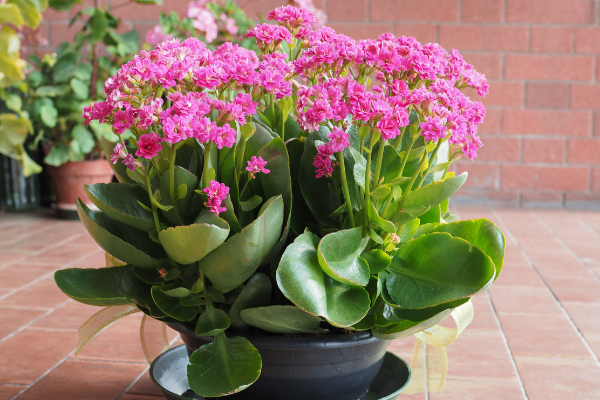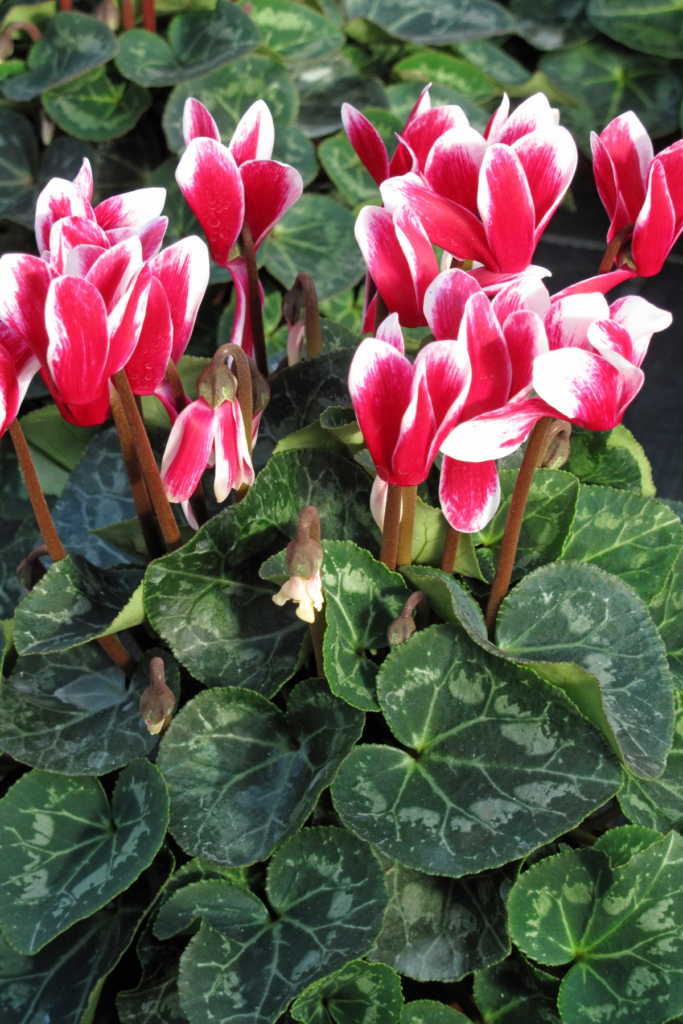
by Sherry Fuller, Curator, Gardens on Spring Creek
[email protected]
Having a flowering plant indoors always brightens up a cold winter. Here are some to try.

Kalanchoe – The most common kind has succulent, rounded leaves and large clusters of flowers. These need very bright light, so right in a window that gets sun will be best. They like to get a bit dry between thorough waterings. Fertilize them monthly in warm months and very occasionally when it’s cooler.
Kalanchoes are usually purchased with flowers, and getting them to rebloom can be tricky. Cut them back about halfway after blooming, move them into a larger pot if needed, and then move them outside for the summer. They are day-length sensitive like poinsettias, so they need total darkness at night for about six weeks while still getting plenty of sun during the day. If you have an unused room with a sunny window, this is ideal for a kalanchoe.
African Violet – May be your grandmother’s favorite plant for a good reason, as they can bloom almost nonstop year-round. Violets like to be warm and don’t care for drafts. An east- or north-facing window is ideal, but to the side of more sunny windows can work as well. Set violets in a large saucer of lukewarm water when they dry out, and then let them drip dry. Fertilize with half-strength food every two to six weeks.

Begonia – So many to choose from, and each needs slightly different conditions. In general, when indoors, they need bright light – but not direct sunlight – and prefer to get quite dry between waterings. Rex begonias have large, colorful leaves that may be considered more beautiful than their flowers. Cane begonias have taller stems, often with spotted leaves and sprays of pink flowers. The common wax and tuberous begonias often used outdoors in summer can be brought in, but these species often don’t thrive inside like others.

Cyclamen – With heart-shaped leaves mottled with silver and flowers with swept-back petals, cyclamen are lovely. Keeping them happy for a prolonged time is a little harder, though. They prefer cool temperatures, especially at night, bright light, and careful watering. Try growing one on a bright, but not hot, windowsill and leaving it on the window side of your curtains at night so it can enjoy the cooler temperatures there. After they bloom, cyclamen usually go dormant. When leaves begin to yellow, stop watering and let it have two to three months of dry rest.
Geranium – The most common ones prefer quite cool temperatures through the winter, but very bright light and dry conditions. If that doesn’t describe your house, look for Martha Washington varieties that prefer less light, more heat, and more water.
Succulents – Quite a few succulents will bloom inside in the winter, given the proper conditions. Give them as much sun as possible, keep them on the dry side and let them get a bit rootbound in their pots. Aloes, string of pearls, snake plants, and echeverias are among the varieties that will reward this treatment with winter blooms.
Support Northern Colorado Journalism
Show your support for North Forty News by helping us produce more content. It's a kind and simple gesture that will help us continue to bring more content to you.
BONUS - Donors get a link in their receipt to sign up for our once-per-week instant text messaging alert. Get your e-copy of North Forty News the moment it is released!
Click to Donate
